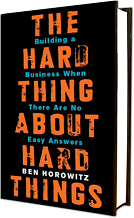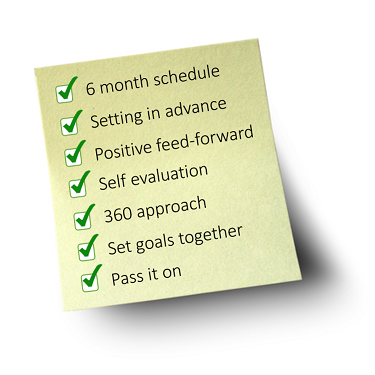Hacking Performance Review Meetings in a Startup — Medium
Hacking Performance Review Meetings in a Startup
Growing Pains: Lessons learned in a small, yet growing, startup

Following positive feedback on our post about JoyTunes’ successful launch on Product Hunt, I thought we could possibly share some more of our ongoing experiences in a growing startup. Here, I’ll discuss our decision to introduce a semi-formal performance review process in our company.
I enjoy corporate bureaucracy like any average guy (…), so for me, 360 meetings, performance meetings and basically any other form of procedural formal process for timely feedback was an overkill at our lean, smart, somewhat cynical, 19-people startup, JoyTunes.
But that recently changed.
Why did JoyTunes decide to incorporate a performance process?
I had no intention of introducing a formal feedback process at our size and stage. All in due time, I kept saying. Besides, we have weekly meetings and such where feedback is openly given on an ongoing basis. But then a combination of things changed my mind:
- Two team members, whom I meet regularly, expressed their frustration about “not knowing how they were doing”. This surprised me, of course, since we talk all the time.
- Some time ago, we parted ways with an employee that expressed a similar sentiment to the point that he was outright surprised we weren’t happy with his/her performance despite talking about this in one-on-ones, probably too implicitly. *Fail*
- I recently finished reading The Hard Thing About Hard Things by Ben Horowitz. Ben’s discussion over management debt struck close to home. In fact, if my memory serves me well, Ben’s leading example of management debt was running fast and neglecting performance meetings in a startup of ~20 people. Reading this closed the deal for me and we decided internally that we were going for it.

Who is this for?
What I mention here is probably most fit for small companies of 12–40 people that have been around for at least 1–2 years. In these companies team retention and mechanisms to help issues surface tend to be very relevant. If you opened your company 6 months ago and already have a team of 25, you might need a different process or none at all at this point.
Goals & Impact
The main goal is to strengthen the organization together by discovering issues and getting everyone to work better and be happier in what they do, including me.
Our day to day is super packed, and so while it might seem that we look closely at our work and our team members, it’s surprising how much we actually miss. So, first and foremost, we’re doing this to optimize the following:
- Increase # of days where people return home and say it was an amazing day at JoyTunes — find out what makes this happen and capitalize on it.
- Everyone learns and improves, and individual impact, as well as the overall, is increased.
Feedback process goal: increase # of days where people return home and say it was an amazing day at work! <tweet this>
The 360 Feedback Process at JoyTunes
Finally, we’re getting down to the details. But first, it’s important to note this is a working process and we will surely learn and improve over time. It’s also dynamic in the sense that it needs to adapt to the size, stage, and personal dynamics of the specific team. As our team evolves, so will this process.
Below are the principles we set, based on multiple best-practices from other companies and some academic work that was introduced to me (like this and this). It’s an easy one-pager that we share around.

1. Schedule
We felt six months cycles made sense, like in many other companies, so it’s not overly cumbersome but also not too far apart, especially in our rapidly changing environment. At first the exact schedule was at the discretion of whoever was in charge of the specific meeting, but we quickly saw that this was going to be very difficult to keep track of, so we agreed on “around June” and “around December”. Fairly standard stuff.
2. Setting In Advance
A meeting needs to be scheduled in advance with notice that it’s a “special” meeting.
- Don’t just do this during a regular weekly meeting without notice. Give people time to think on their own performance, their feedback for others, and on their own personal goals.
- Be sure to get feedback in advance from others in the team about this person.
3. Feedback: Focus on positive, forward looking and expectations
- The conversation should be a discussion on what is needed/expected, and how one can push to exceed the expectations, which is what we all need at a startup.
- How can we strengthen good qualities and “good days”. We don’t want to dwell too much on lacking qualities, but instead strengthen the great ones. For example, start with asking for a concrete example of an ‘amazing day’, what was special about that day?
- Feed-forward vs. Feed-back: Look ahead, how are things going to change/improve?
4. Self Evaluation
Your team member should start by evaluating him/herself. It’s surprising how self aware we all are, and it’s a much stronger driver for change.
“How do you think you’re doing in the team? What are your strengths / weaknesses?”
“What things do you enjoy doing the most/least?” (‘least’ helps to flag potential issues)
5. 360 Approach
This is as much an opportunity to get feedback as it is to give feedback. This is key to our process.
- Hear people out, don’t be defensive, don’t cut them in the middle, share team feedback as well.
- Ask about other team members (including the CEO of course).
6. Set Goals Together
- Goals should focus on impact to the company and self development.
- Evaluate progress in goals at next meetings together.
- Write these down!!! Create a shared doc where you document the goals so you can look at them again in the future conversations.
7. Pass It On: Send to the CEO
- Key insights/feedback points (where relevant and not private).
- Goals that were set.
As a side note, it’s important to be dynamic and adaptive. Before starting the process, we discussed it openly in company meetings and in personal ones, and I had another round of meetings during and after the fact to get feedback on the process itself. These retrospective meetings proved very useful in improving how we do these meetings in the future and also gave me a good sense that the positive impact of the process was worth the work we put into it.
Some Results
Highly effective, otherwise I wouldn’t have written about it… 🙂
In more detail, we solved multiple issues with these meetings, pushing forward team members (including myself and other founders), setting new expectations and goals after discovering none were explicitly set before, flagging problematic areas to be solved and allowing for much needed venting. Both inner-team relations improved, as well as overall sentiment.
Much of this process was developed with my team at JoyTunes (shout out to Nadia Hitman), integrating multiple conversations with other startup CEOs, and with the CEO of the Israeli HR Association, Dr. Shlomit Kaminka, who happens to be my Mom (thanks Ma!). God willing, we plan on writing together about other (hopefully) relevant HR process adaptations for the startup scene.
That’s about it. I hope this was helpful. Please feel free to send me any suggestions or insights.
